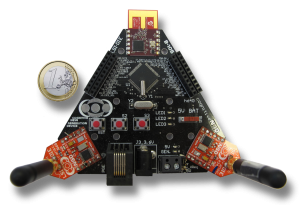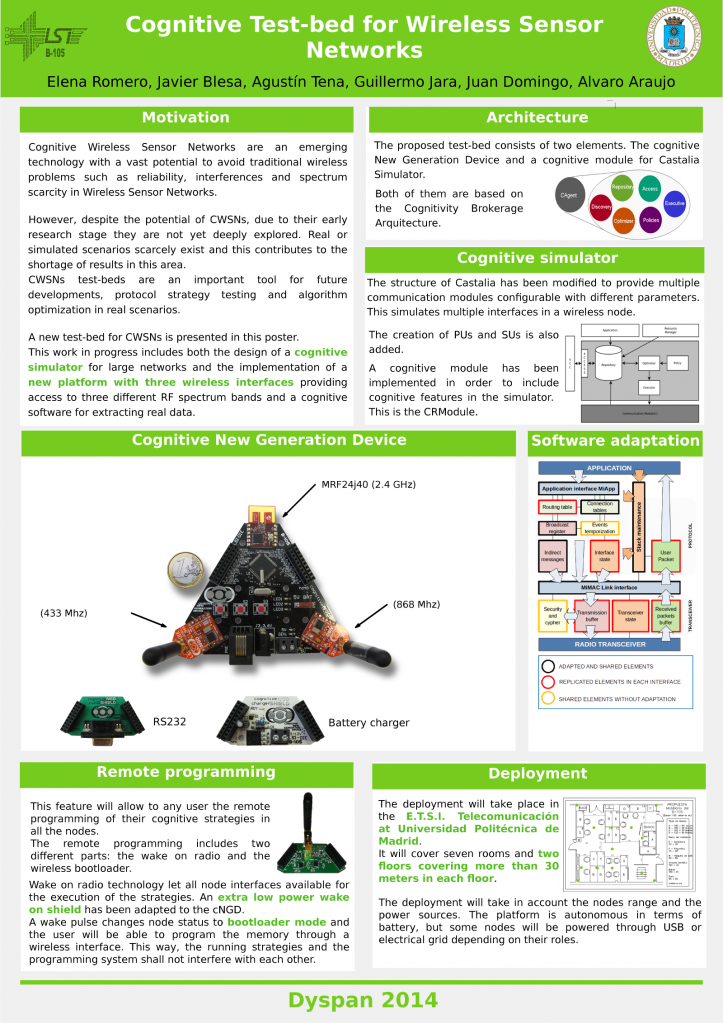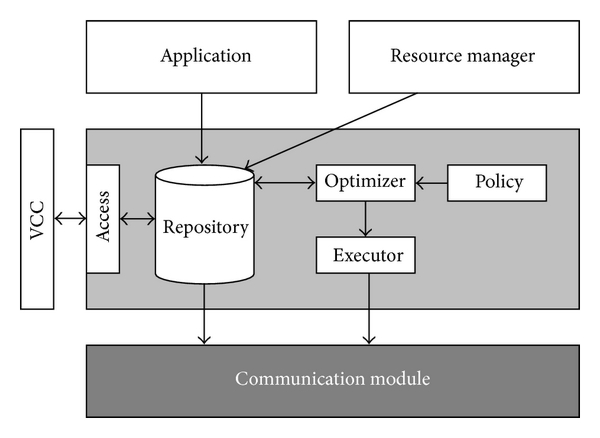Title: Cognitive Wireless Sensor Network Platform for Cooperative Communications
Authors: Agustín Tena, Guillermo Jara, Juan Domingo, Elena Romero, Alvaro Araujo
Published in: International Journal of Distributed Sensor Networks
Date of Publication: January 2014
Digital Object Identifier : 10.1155/2014/473905
Web: http://www.hindawi.com/journals/ijdsn/2014/473905/
Nowadays, Wireless Ad-Hoc Sensor Networks (WAHSNs), specially limited in energy and resources, are subject to development constraints and difficulties such as the increasing Radio Frequency (RF) spectrum saturation at the unlicensed bands. Cognitive Wireless Sensor Networks (CWSNs), leaning on a cooperative communication model, develop new strategies to mitigate the inefficient use of the spectrum that WAHSNs face. However, few and poorly featured platforms allow their study due to their early research stage.
This paper presents a versatile platform that brings together cognitive properties into WAHSNs. It combines hardware and software modules as an entire instrument to investigate CWSNs. The hardware fits WAHSN requirements in terms of size, cost, features, and energy. It allows communication over three different RF bands, becoming the first cognitive platform for WAHSNs with this capability. In addition, its modular and scalable design is widely adaptable to almost any WAHSN application.
Significant features such as Radio Interface (RI) agility or energy consumption have been proved throughout different performance tests.











